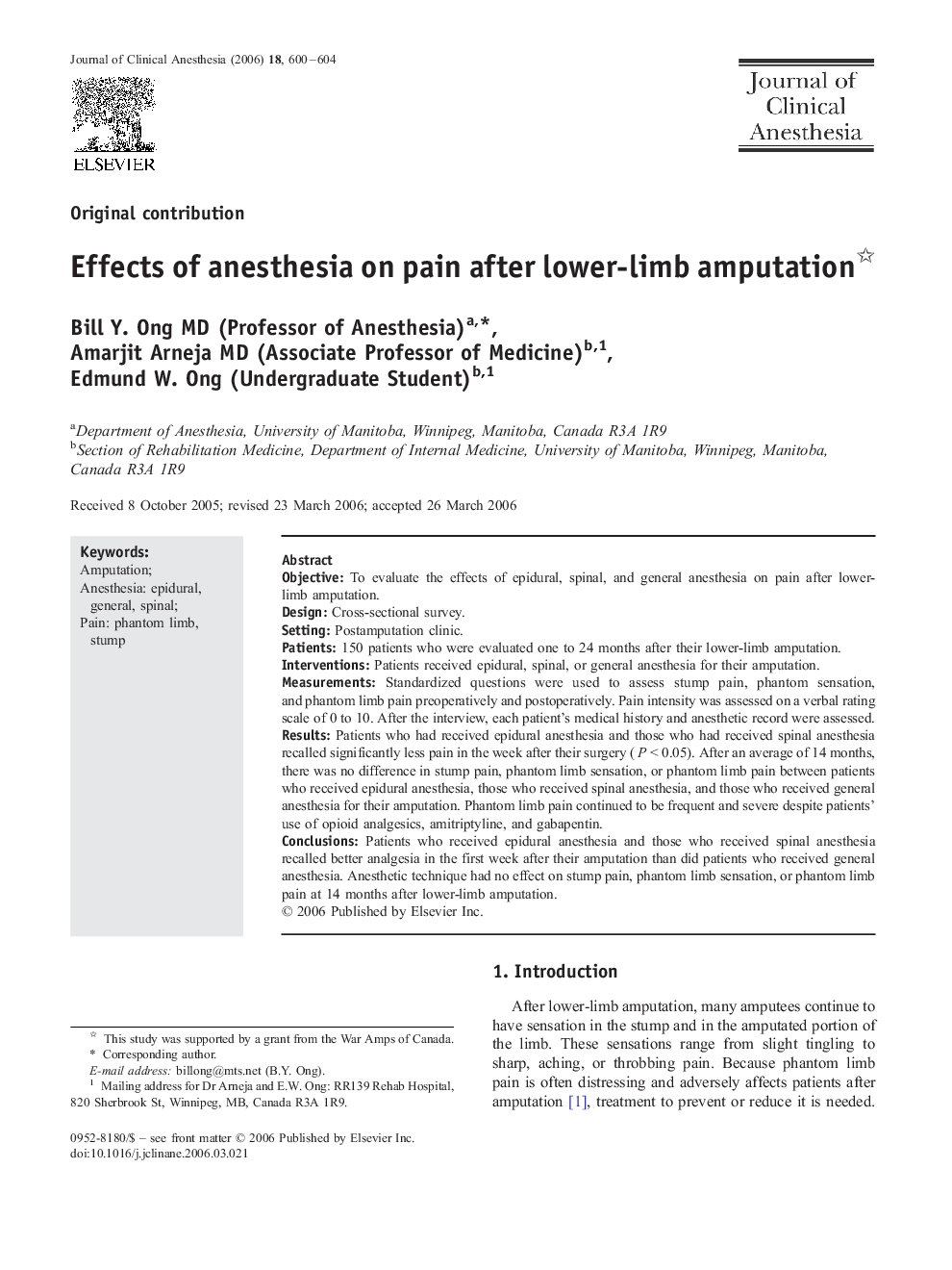| Article ID | Journal | Published Year | Pages | File Type |
|---|---|---|---|---|
| 2764115 | Journal of Clinical Anesthesia | 2006 | 5 Pages |
ObjectiveTo evaluate the effects of epidural, spinal, and general anesthesia on pain after lower-limb amputation.DesignCross-sectional survey.SettingPostamputation clinic.Patients150 patients who were evaluated one to 24 months after their lower-limb amputation.InterventionsPatients received epidural, spinal, or general anesthesia for their amputation.MeasurementsStandardized questions were used to assess stump pain, phantom sensation, or phantom limb pain preoperatively and postoperatively. Pain intensity was assessed on a verbal rating scale of 0 to 10. After the interview, each patient's medical history and anesthetic record were assessed.ResultsPatients who had received epidural anesthesia and those who had received spinal anesthesia recalled significantly less pain in the week after their surgery (P < 0.05). After an average of 14 months, there was no difference in stump pain, phantom limb sensation, or phantom limb pain between patients who received epidural anesthesia, those who received spinal anesthesia, and those who received general anesthesia for their amputation. Phantom limb pain continued to be frequent and severe despite patients' use of opioid analgesics, amitriptyline, and gabapentin.ConclusionsPatients who received epidural anesthesia and those who received spinal anesthesia recalled better analgesia in the first week after their amputation than did patients who received general anesthesia. Anesthetic technique had no effect on stump pain, phantom limb sensation, or phantom limb pain at 14 months after lower-limb amputation.
